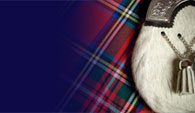Irish Jig Single Time
History: There is little history of Irish Dancing, caused in all probability by the disturbed state of Ireland during and after the Tudor wars together with the ordinances forbidding all things Irish, even the language.These factors are responsible for the decline in the peaceful arts and for the gaps in both oral and written records. Yet before wars engulfed the country, Irish music and dancing were much admired and had permeated English Life to an extent difficult to appreciate.
The Irish Jig Single Time with the use of the Shillelagh, the threatening movements with clenched fists and other occupational gestures reflects the gay, spontaneous and vigorous style of the village ceilidh's. This also applies to the freer arm movements by girls and boys performing in Single Time.
Interpretation: The style of the Irish Jig should be relaxed, the movements rhythmical and lilting and danced in dignified manner. Ease, grace and beauty of movement are of paramount importance.
Single steps beautifully danced give more pleasure than difficult steps danced with obvious physical strain.
In the Irish Jig with use of Shillelagh, the interpretation would be more marked due to the nature of the steps and their corresponding arm actions. Timing at all times should be clearly but not violently marked.
Execution: There is no over accented beating in Irish Dancing.All movements are controlled from the hips downward.
Beating and Tripling should be centered on ball of foot, and be performed with clarity and rhythmical accent.
Turnout must not be exaggerated.
Both arms swing from side to side with freedom, breadth and balance.


